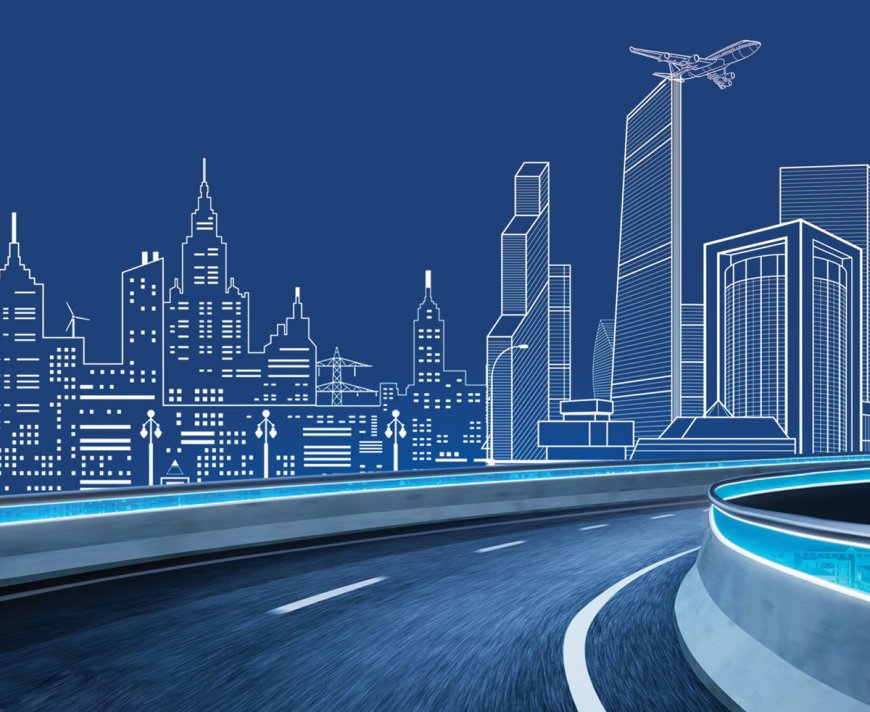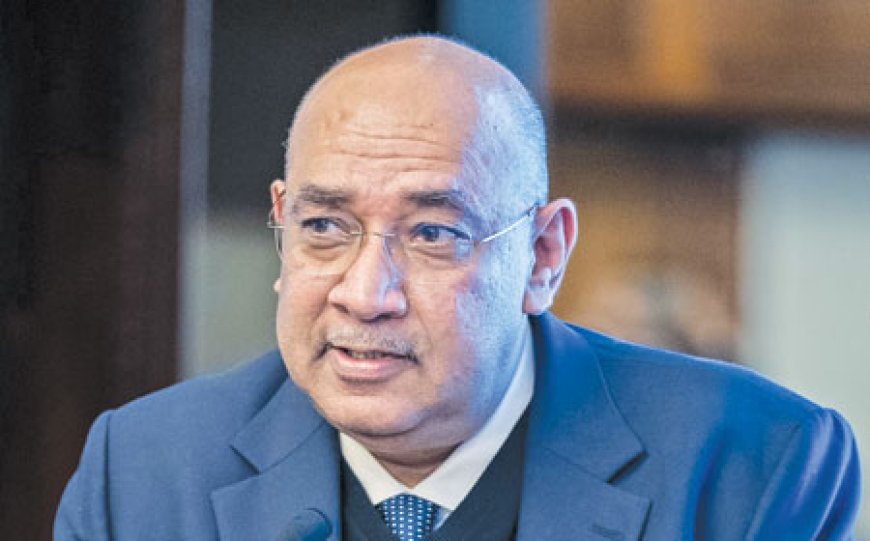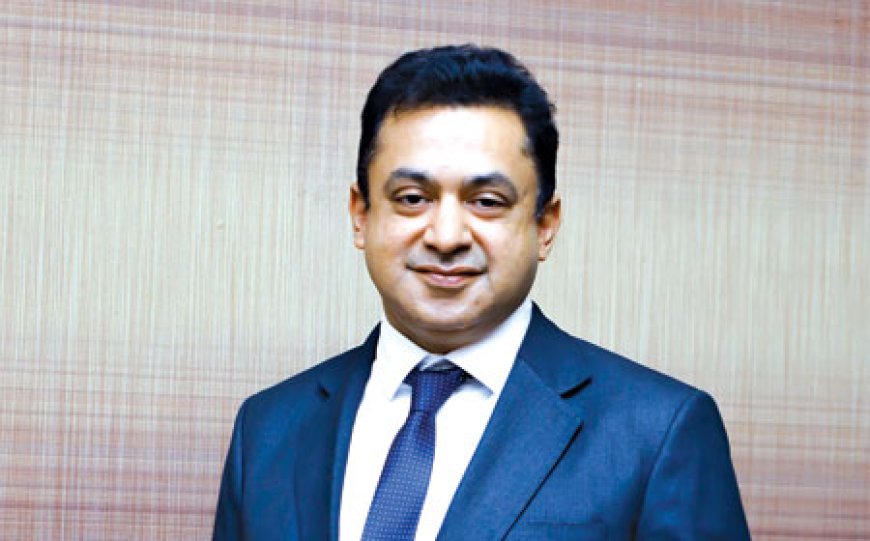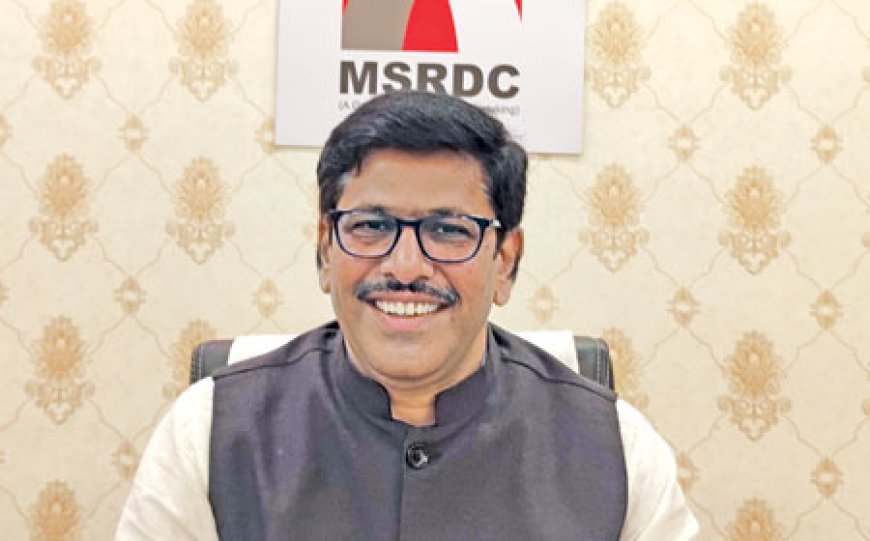PSUs: Putting Infra on Fast Track

India’s infrastructure construction industry is majorly driven by the government-sponsored projects under the mega schemes such as the Bharatmala, Sagarmala, GatiShakti, Parvatmala, Dedicated freight corridors, High-speed Rail projects, Smart Cities, UDAN, etc. All these mega plans are being implemented by the Public Sector Undertakings (PSUs) and Autonomous Bodies (ABs). In this scenario, PSUs act as the backbone of India’s infrastructure development and they are striving to put the country’s infrastructure development on fast track. Construction Times explores the whole trend with inputs from a handful of these agencies.
Indian construction market is growing at an impressive CAGR and this trend is expected to continue in the coming years due to more investments planned in infrastructure creation in the country. Majority of these investments are happening in public sector government projects. Key government sponsored programmes under the National Infrastructure Pipeline (NIP) such as Bharatmala, Sagarmala, UDAN etc and various projects in railways, logistics, water infrastructure and urban infrastructure will take construction industry a long way in the coming years. In this scenario, Public Sector Undertakings (PSUs) play a major role in driving the growth of the country’s economy through various development programmes in line with the government’s policy initiatives.
Roads & Highways
Road transport is the dominant mode of transport in India, both in terms of traffic share and contribution to the national economy. Apart from facilitating the movement of goods and passengers, road transport plays a key role in promoting equitable socio-economic development across regions of the country. National highways contribute to a total length of 1,46,145 km, while state highways 1,79,535 km and other roads constitute 63,45,403 km.
The Bharatmala Pariyojana was launched with the primary focus on optimizing the efficiency of the movement of goods and people across the country. Phase I of the Bharatmala Pariyojana approved in October 2017, focuses on bridging critical infrastructure gaps through development of 34,800 km of national highways. The status of Bharatmala Pariyojana Phase 1 entails a total length of 34,800 km in 31 states and UTs, 550+ districts. The length awarded is 27,384 km and the length constructed is 15,045 km. The phase 1 is to be completed by 27-28.
All these mega plans for the country’s roads and highways development are spearheaded by the Central Government government agencies such as NHAI, NHIDCL, BRO and state agencies.
The National Highways and Infrastructure Development Corporation Limited (NHIDCL) has an impressive performance over the last couple of years. The value of work executed experienced a significant surge from Rs 14,953 crore in 2021-22 to Rs 19,309 crore in 2022-23, demonstrating a robust increase of 42.61%, the revenue has increased from Rs 332.53 crore in FY 2021-22 to Rs 474.22 crore in FY 2022-23.
The NHAI has a total length of 81,570 km highway projects in which, 54,380 km has been completed, 12,109 km under implementation and 12,304 km balance for award.
The pre-election budget document outlines a slightly augmented outlay of Rs 2.78 lakh crore for the highways sector, emphasising the government's continued focus on infrastructure development. In the fiscal year 2023-24, an allocation of Rs 2.70 lakh crore had initially been made for the highways sector, later revised to Rs 2.76 lakh crore.
Railways
Indian railway network spanned 104,647 km of running track length and 68,426 km of route length as of March 2023. With a vision of providing eco-friendly, faster and energy-efficient mode of transportation, Indian Railways is marching ahead towards 100% electrification of Broad Gauge tracks. During the calendar year 2023, Indian Railways has achieved 6,577 route kilometers electrification. Total Broad Gauge (BG) network of 61,508 route kms have been electrified up to December 2023 which is 93.83% of total Broad Gauge route (65,556 RKMs) of Indian Railways.
Ministry of Railways has taken up construction of two Dedicated Freight Corridors (DFCs) viz Eastern Dedicated Freight Corridor (EDFC) from Ludhiana to Sonnagar (1,337 Km) and the Western Dedicated Freight Corridor (WDFC) from Jawaharlal Nehru Port Terminal (JNPT) to Dadri (1,506 km). Construction of EDFC has been fully completed and 1176 km out of 1506 km of WDFC has been completed.
The construction of DFCs will reduce the logistic cost, leading to development of new industrial hubs and Gati Shakti Cargo Terminals.
Ports & Waterways
The Sagarmala Programme set the development of Indian ports, shipping and waterways sector. This is an initiative by the Government of India to enhance the performance of the country's logistics sector. The programme envisages unlocking the potential of waterways and the coastline to minimize infrastructural investments required to meet these targets.
The Sagarmala Programme aims to promote port-led development in the country by exploiting India's 7,517 km long coastline, 14,500 km of potentially navigable waterways and its strategic location on key international maritime trade routes.
Airports
The Indian aviation market is demonstrating impressive results, and the anticipated growth is enormous. It is the world's third largest and fastest-growing market (after the USA and China), growing at almost 10% for the last decade. The Airport Authority of India is the body that manages both the International Airports and Domestic Airports in India. Airports Authority of India (AAI) manages a total of 137 Airports, which includes 103 Domestic Airports, 24 International Airports, and 10 Customs Airports.
In the interim budget 2024-25, Finance Minister Nirmala Sitharaman announced doubling the number of airports to 149. In addition, the proposal also included increasing the number of new air routes to 517.
Role of State agencies
Implementing agencies across various states have also played important roles in their respective states for executing infrastructure developments. For eg, the Maharashtra State Road Development Corporation play a key role in the road and highway infrastructure development in the state of Maharashtra. The Mumbai Metropolitan Region Development Authority (MMRDA) takes lead role in the overall infrastructure development of the MMR region.
In Kerala, the state agency Vizhinjam International Seaport Ltd is implementing the country’s one-of-its-kind transshipment port, Vizhinjam Port. Once operational, this will act as the country’s major transshipment hub for domestic and international maritime trade.
Project financing
Project funding plays a crucial role in the seamless development of infrastructure projects in the country. While there are international and private funding to support the infrastructure development, government agencies such as India Infrastructure Finance Company Limited (IIFCL) have played a vital role in the execution of many projects in the country.
Industry speaks

P R Jaishankar, Managing Director, IIFCL, says, “Apart from being an innovative lender, IIFCL has undertaken numerous innovative measures to provide support to infrastructure projects that have been funded by a consortium of banks. IIFCL is also acting as a Lead Lender in various infrastructure projects, including in the country’s first railway station redevelopment project.”

Dr Sanjay Mukherjee, Metropolitan Commissioner, MMRDA, says, “MMRDA is playing a pivotal role in spearheading the ongoing infrastructure developments in MMR and improving the region's quality of life. Our goal is to make commuting in Mumbai easy, efficient and sustainable. As the primary planning and implementing agency for infrastructure projects in the region, MMRDA is taking proactive measures to address the growing needs of the growing population and urbanisation challenges. By initiating and executing projects such as Mumbai Metro Rail project, MTHL, various bridges, cement concrete roads, Surya regional water supply scheme, and growth centres, we are ensuring comprehensive and sustainable development across the region.”

S K Survase, Chief Engineer & Project Director (Expressway-Nodal)

Dr Divya S Iyer, Managing Director, Vizhinjam International Seaport Ltd (VISL), says, “Vizhinjam is the only transshipment hub in the Indian subcontinent which is strategically located closer to the East-West & Far East-Gulf route. The advantage of this specialty is that liners prefer minimum deviation from their courses when selecting a transshipment port. East–West trade route (Far-East to Europe and the US via Malacca Straits and Suez Canal) is relevant for India. Vizhinjam thus is a promising location given its position at 6-10 Nautical Miles deviation (0.2-1 hour) from the Suez route. With the coming of well-established hinterland connectivity, Vizhinjam Seaport will become the first-choice port in India.”

Dr. Abhishek Mittal, Principal Scientist & Head, FP Division, CSIR-CRRI, says, “With the ever-evolving highways sector facing more and more challenges, new and innovative solutions/technologies need to be adopted. The sector needs to become more agile and receptive to adopt the new and innovative solutions. In some instances, such new concepts may not provide the desired output, but such failures shouldn’t be a deterrent to adopting new solutions. CSIR-CRRI is fully committed to provide practically implementable solutions for challenging problems.”







